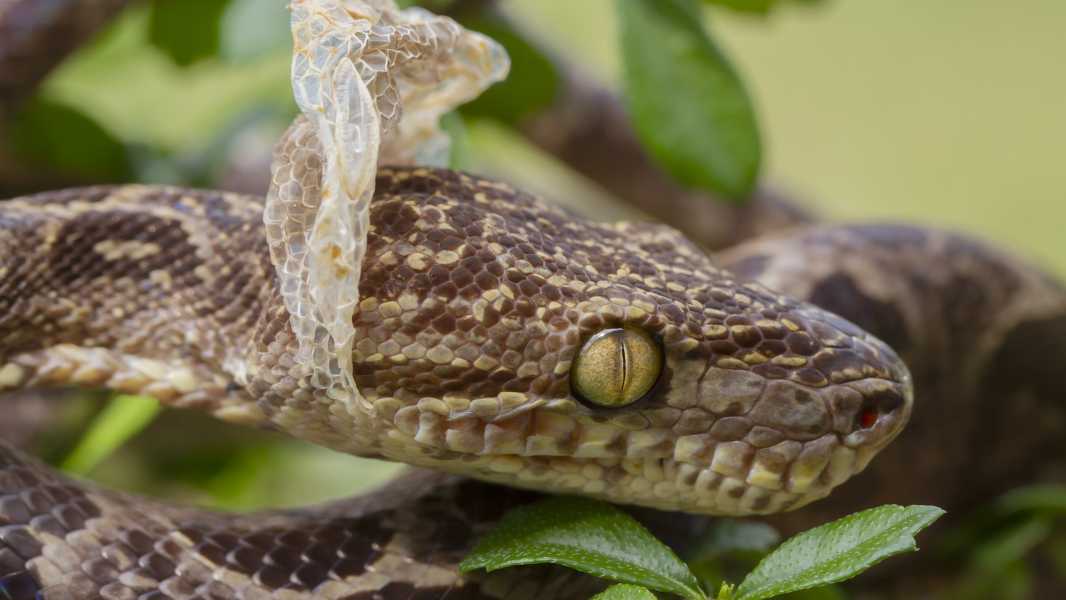
Snakes tend to shed their skin as they grow, when key life events occur, or when they encounter parasites, diseases, or infections. (Image credit: Mark Kostic via Getty Images)
Have you ever wished you could just crawl out of your own skin? Snakes are one of the few creatures on the planet that can actually do this. Numerous times throughout its life, a snake sheds its old skin in a process known as “molting,” leaving behind papery remains that are delicately imprinted with the unique patterns of its scales.
Shedding skin is a normal process; humans do it, too. “But unlike us, whose skin sheds in small pieces, snakes create a whole new layer of skin and the old layer falls off in one piece,” said Jason Dallas, a research scientist who studies bacterial-fungal interactions in snakes and amphibians at Middle Tennessee State University.
But why do snakes shed their skin, and why do they shed it all at once?
A snake's skin is made up of two main layers. The inner, softer layer, the dermis, contains the pigments that give snakes their intricate colors and patterns. The dermis is covered by the epidermis, a tougher layer of translucent keratin scales.
The outer layer of human skin also contains keratin, but the structure of our skin allows it to peel off in small pieces that are barely noticeable to the naked eye. In snakes, the outer keratin layer forms a single unit, creating a sheath that is bonded to the more delicate dermis underneath.
The downside to this tough outer layer is that it does not stretch; it remains relatively inflexible and constricts the snake as it grows. This is one of the main reasons snakes shed their skin: to create more space. Snakes grow faster when they are young, so they shed more often when they are young.
In fact, snakes' first molt occurs “within a few days of hatching or birth,” Daniel Kane, senior reptile keeper at London Zoo, told Live Science in an email. By the time they reach adulthood, snakes typically molt about three or four times a year, Kane added.
When a snake is almost ready to shed, it begins to produce a second fresh layer of keratin on top of the dermis and underneath the original keratin sheath. It also secretes a fluid that helps separate the old layer from the new. As this process goes on, the snake will usually find a rough spot to rub its head against. This creates a gap in the old skin through which the snake can then begin to crawl out.
Through constant rubbing and muscle spasms, the snake eventually manages to shed its entire skin, freeing itself of the shriveled residue and revealing a shiny new set of scales. A freshly picked-up snake can be up to 20 percent longer than the original, as this newly lubricated skin is “quite flexible before it dries out and becomes brittle,” Kane explained.
Once the skin is shed, the snake leaves it and slithers away. Although snakes do not typically eat their skin, some other reptiles, such as lizards and geckos, do so to replenish lost nutrients.
Sourse: www.livescience.com





